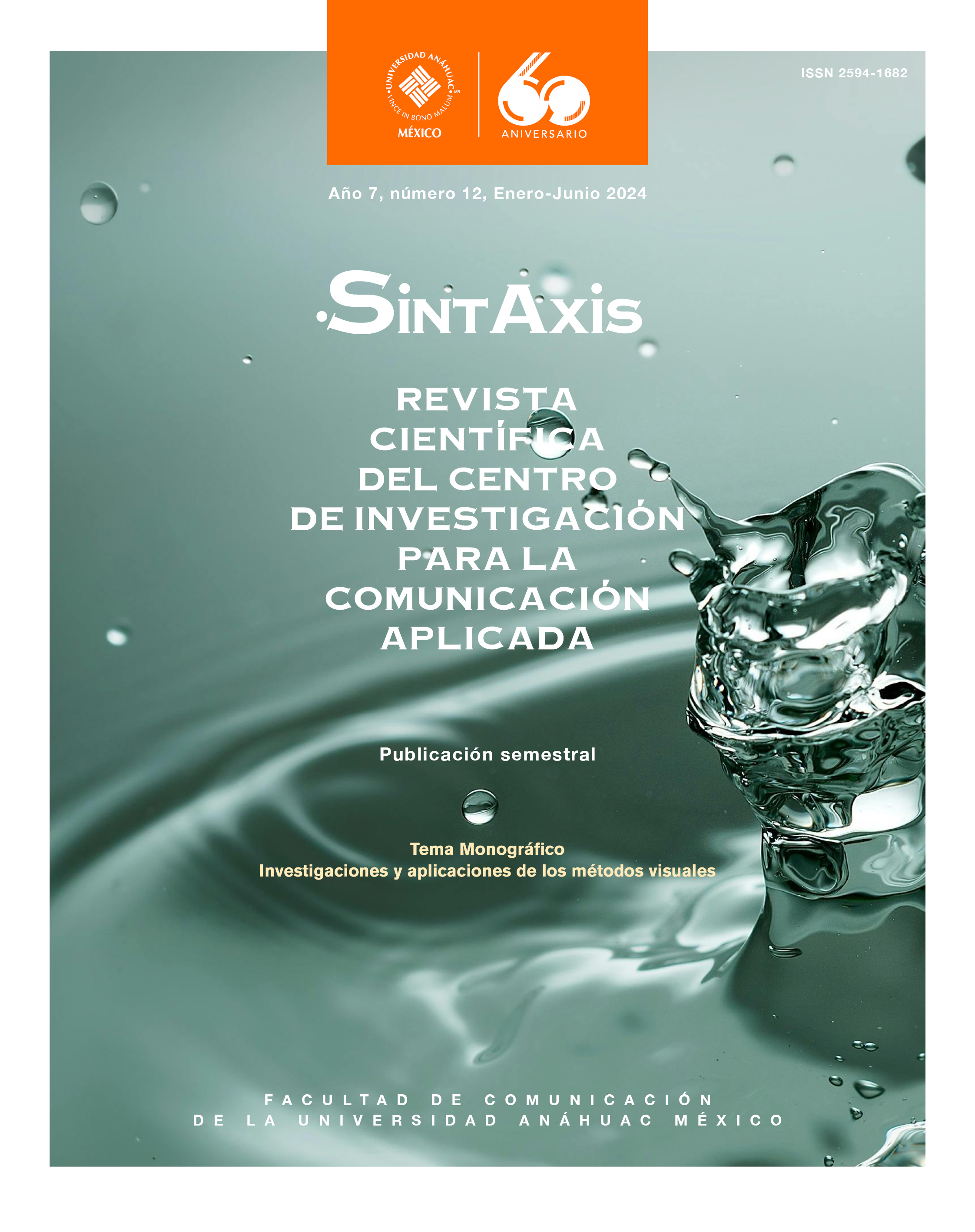Implications of photography’s computational turn for visual methods
Main Article Content
Abstract
Drawing on the research methods developed during an exploratory visual analysis of global photojournalism during COVID-19, this paper examines the opportunities for employing metadata (from capture, context, and publishing) in visual research and the implications of emerging computational photography. Metadata is critical for facet analysis of visual datasets and exploratory visual analysis, as well as assessing image validity, provenance, and capture and publishing contexts. In the case study dataset, only one-third of the photojournalism included embedded EXIF metadata, associated with the editorial workflows of source photo agencies, while other metadata was rare (such as geospatial data) or absent (IPTC metadata). Emerging imaging approaches present both opportunities and challenges for visual researchers to engage with how our visuals worlds are captured, selected, and represented. As imaging techniques rely on rapidly evolving and conceptually opaque sensing and algorithmic techniques, visual researchers should prioritize engaging with visual tools and standards development.
Downloads
PLUMX Metrics
Article Details

This work is licensed under a Creative Commons Attribution-NonCommercial-NoDerivatives 4.0 International License.
The author keeps the property rights with no restriction whatsoever and guarantees the magazine the right to be the first publication of the work. The author is free to deposit the published version in any other medium, such as an institutional archive or on his own website.
References
Adams, A., Talvala, E., Park, S et al. (2010). The Frankencamera: An experimental platform for computational photography. ACM Transactions on Graphics, 29(4), 1-12. https://doi.org/10.1145/1778765.1778766 DOI: https://doi.org/10.1145/1833351.1778766
Associated Press. (2018). 2018 Annual Report. https://www.ap.org/about/annual-report/2018/
Becker, K. E. (1991). To control our image: Photojournalists and new technology. Media, Culture, Society, 13(3), 381-397. https://doi.org/10.1177/016344391013003007 DOI: https://doi.org/10.1177/016344391013003007
C2PA. (2021, February). Guiding Principles for C2PA Designs and Specifications. https://c2pa.org/principles/
Ferrucci, P., Taylor, R. (2019). Blurred Boundaries: Toning Ethics in News Routines. Journalism Studies, 20(15), 2167-2181. https://doi.org/10.1080/1461670X.2019.1577165 DOI: https://doi.org/10.1080/1461670X.2019.1577165
Hadland, A., Lambert, P., Campbell, D. (2016). The Future of Professional Photojournalism. Journalism Practice, 10(7), 820-832. https://doi.org/10.1080/17512786.2016.1163236 DOI: https://doi.org/10.1080/17512786.2016.1163236
Kilker, J. (2016). All About Whom? Stock Photos, Interactive Narratives and How News About Governmental Surveillance Is Visualized. Visual Communication Quarterly, 23(2), 76-92. https://doi.org/10.1080/15551393.2016.1178581 DOI: https://doi.org/10.1080/15551393.2016.1178581
Lehmuskallio, A. (2016). The camera as a sensor: The visualization of everyday digital photography as simulative, heuristic, and layered pictures. In Digital Photography and Everyday Life: Empirical studies on material visual practices. https://doi.org/10.4324/9781315696768-1 DOI: https://doi.org/10.4324/9781315696768-16
Lewis, H. (2021, February 24). Where Are the Iconic COVID-19 Images? The Atlantic. https://www.theatlantic.com/international/archive/2021/02/where-are-iconic-images-covid-19-pandemic/618036/
Mäenpää, J. (2014). Rethinking Photojournalism: The Changing Work Practices and Professionalism of Photojournalists in the Digital Age. Nordicom Review, 35(2), 91-104. https://doi.org/10.2478/nor-2014-0017 DOI: https://doi.org/10.2478/nor-2014-0017
Maynard, P. (2000). The engine of visualization: Thinking through photography. Cornell University Press. https://doi.org/10.7591/9781501728631 DOI: https://doi.org/10.7591/9781501728631
Ritchin, F. (2010). After Photography (1st edition). W. W. Norton, Company. Rockwell, G., Sinclair, S. (2016). Hermeneutica: Computer-Assisted Interpretation in the Humanities. https://doi.org/10.7551/mitpress/9522.001.0001 DOI: https://doi.org/10.7551/mitpress/9522.001.0001
Schneider, C., Rasband, W., Eliceiri, K. (2012). NIH Image to ImageJ: 25 years of image analysis. Nature Methods, 9(7), 671–675. https://doi.org/10.1038/nmeth.2089 DOI: https://doi.org/10.1038/nmeth.2089
Scire, S. (2020, April 6). For its must-read coronavirus coverage, The Atlantic is rewarded with a huge surge of digital subscriptions. Nieman Lab. https://www.niemanlab.org/2020/04/for-its-must-read-coronavirus-coverage-the-atlantic-is-rewarded-with-ahuge-surge-of-digital-subscriptions/
Wickham, H. (2014). Tidy Data. Journal of Statistical Software, 59(10). http://dx.doi.org/10.18637/jss.v059.i10 DOI: https://doi.org/10.18637/jss.v059.i10


